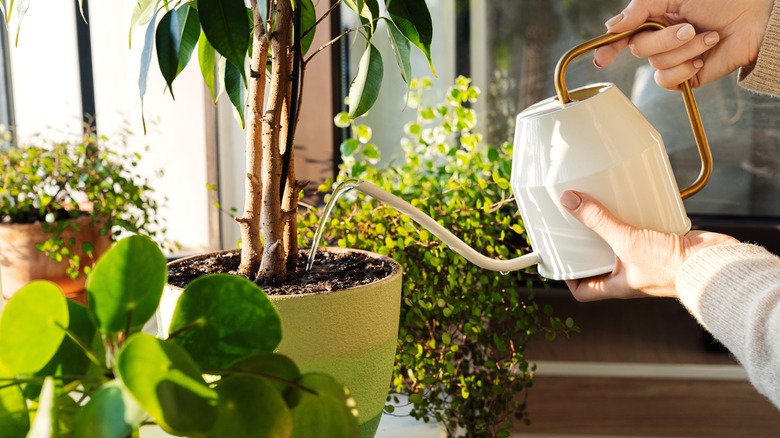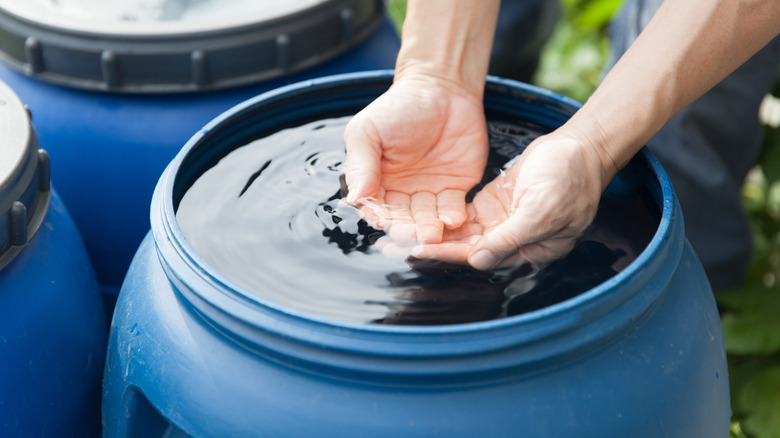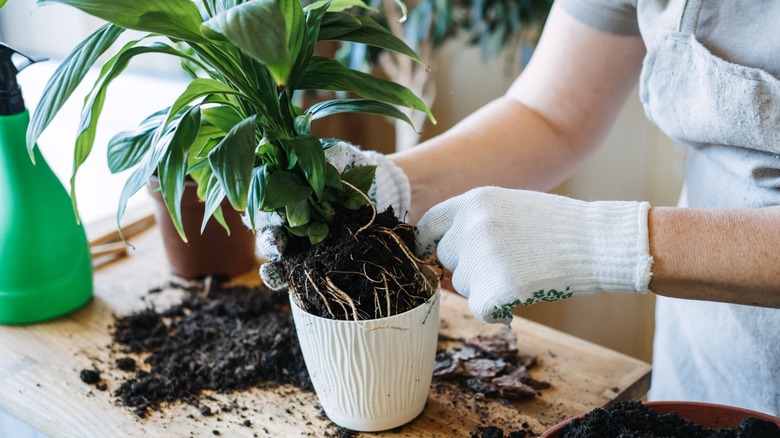The Watering Mistake You're Likely Making With Indoor Plants
While watering your indoor plants from the tap is sometimes the best option, it can be detrimental if your home is equipped with a water-softening system. Hard water presents many problems, including leaving residue behind on showers and toilets, but the magnesium and calcium it contains are vital nutrients for plants. When those minerals are chemically removed from the water, they are replaced with sodium. For indoor plants, this can be particularly toxic. With time, the sodium will build up in the soil, and since houseplants are potted, this can occur quickly.
The increased sodium levels affect the plant's ability to determine how much water it needs, causing it to not absorb enough. The plant will eventually die even if it's being given sufficient amounts of water. "There isn't any research that tells us which plants can be injured, but plants do have a widely varying tolerance for softened water," J. Robert Nuss, professor of ornamental horticulture, told Penn State University News. "In many cases, water from a mechanical softener has a harmful effect on plant growth."
The best types of water for your indoor plants
For homes with a reverse osmosis water softener, you won't need to worry about giving your plants too much sodium. These softening systems do not add salt to the water, so it is a good choice for watering your plants. The best type of water to give your houseplants is collected rainwater, which will contain essential nutrients without any added chemicals.
Hard water is sometimes a great option for watering your plants, but if the water in your area contains a particularly high level of chlorine or fluorine, it may also be harmful to some plants. If your house has hard water but you have a whole home water softening system, try using an outdoor spigot that's connected to the main water line. This will leave the water in your home soft, but you'll still have access to water that is suitable for your plants.
Helping plants that have been given soft water
When sodium from soft water builds up in your plant's soil, it will need to be treated to remove the salt, or you won't be able to grow anything in it. One way to do this is with leaching, a process of regularly watering the soil with unsoftened water. Over time, this will decrease the sodium levels but may also affect the nutrients in the soil. If your plant is still alive, you can try repotting it in new soil and treating the salty dirt for another plant in the future.
Sometimes soft water may be the only accessible option, but luckily there are ways to dilute it and make it a little safer for your plants. You can try combining your soft water with distilled water or rainwater to lower the overall sodium content, but avoiding soft water altogether is a good way to keep your plants healthy and help them grow.


